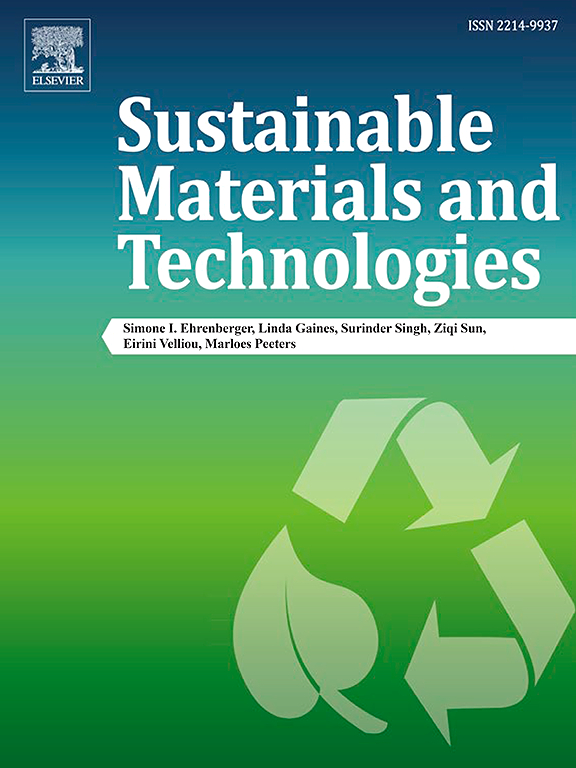Preparation, self-cleaning properties and mechanism of novel photocatalytic magnesia-based cementitious materials
IF 9.2
2区 工程技术
Q1 ENERGY & FUELS
引用次数: 0
Abstract
Photocatalytic cement-based materials are characterized by abundant raw material sources, low preparation costs, and excellent pollutant degradation capabilities. In this study, a g-C3N4/BiOCl0.5I0.5 composite (BiO-CN2) was synthesized via high-temperature calcination and microwave-assisted solvothermal methods, then incorporated into magnesium oxychloride cement (MOC) to form BiOCN/MOC photocatalytic composites. The self-cleaning properties, compressive strength, hydration products, and microstructure of BiOCN/MOC were systematically evaluated. Results show that BiO-CN2 enhances the self-cleaning performance, with improved ability as BiO-CN2 content increases. The composite with 4 % BiOCN exhibited a 20.99 % increase in compressive strength. BiO-CN2 also provided additional nucleation sites, promoting MOC hydration and increasing crystallinity of the P5 phase (5 Mg(OH)2·MgCl2·8H2O). The self-cleaning mechanism is attributed to the adsorption and chemical synergistic effect between BiO-CN2 and the P5 phase on RhB dye degradation.
新型光催化镁基胶凝材料的制备、自清洁性能及机理研究
光催化水泥基材料具有原料来源丰富、制备成本低、降解污染物能力优异等特点。本研究通过高温煅烧和微波辅助溶剂热法合成了g-C3N4/BiOCl0.5I0.5复合材料(BiO-CN2),并将其掺入氯化氧化镁水泥(MOC)中,形成BiOCN/MOC光催化复合材料。系统评价了BiOCN/MOC的自洁性能、抗压强度、水化产物和微观结构。结果表明,BiO-CN2增强了自清洁性能,并随着BiO-CN2含量的增加而增强。添加4% BiOCN的复合材料抗压强度提高了20.99%。BiO-CN2还提供了额外的成核位点,促进MOC水化,提高了P5相(5mg (OH)2·MgCl2·8H2O)的结晶度。这种自清洁机制归因于BiO-CN2与P5相对RhB染料的吸附和化学协同作用。
本文章由计算机程序翻译,如有差异,请以英文原文为准。
求助全文
约1分钟内获得全文
求助全文
来源期刊

Sustainable Materials and Technologies
Energy-Renewable Energy, Sustainability and the Environment
CiteScore
13.40
自引率
4.20%
发文量
158
审稿时长
45 days
期刊介绍:
Sustainable Materials and Technologies (SM&T), an international, cross-disciplinary, fully open access journal published by Elsevier, focuses on original full-length research articles and reviews. It covers applied or fundamental science of nano-, micro-, meso-, and macro-scale aspects of materials and technologies for sustainable development. SM&T gives special attention to contributions that bridge the knowledge gap between materials and system designs.
 求助内容:
求助内容: 应助结果提醒方式:
应助结果提醒方式:


